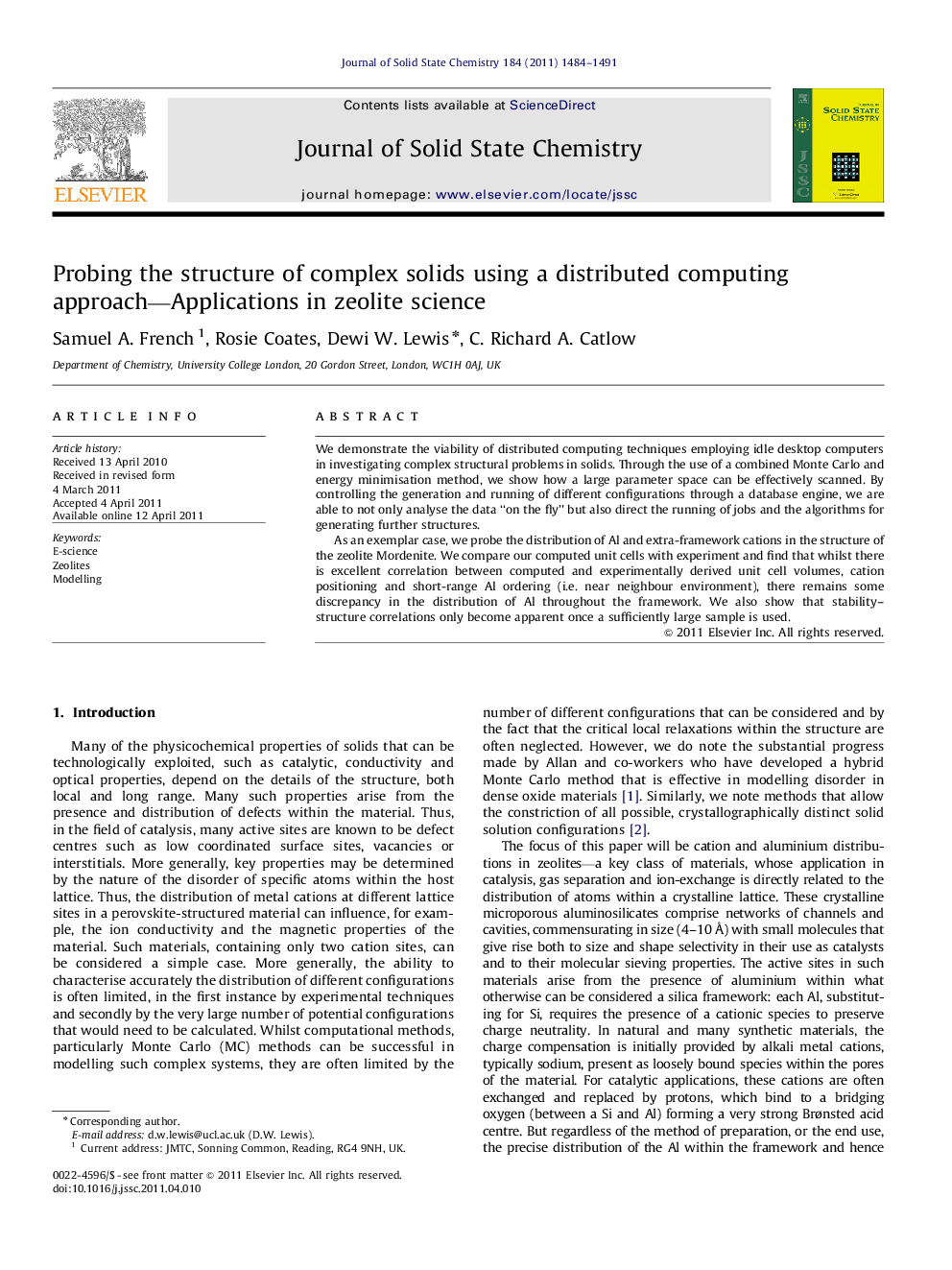| Article ID | Journal | Published Year | Pages | File Type |
|---|---|---|---|---|
| 1329127 | Journal of Solid State Chemistry | 2011 | 8 Pages |
We demonstrate the viability of distributed computing techniques employing idle desktop computers in investigating complex structural problems in solids. Through the use of a combined Monte Carlo and energy minimisation method, we show how a large parameter space can be effectively scanned. By controlling the generation and running of different configurations through a database engine, we are able to not only analyse the data “on the fly” but also direct the running of jobs and the algorithms for generating further structures.As an exemplar case, we probe the distribution of Al and extra-framework cations in the structure of the zeolite Mordenite. We compare our computed unit cells with experiment and find that whilst there is excellent correlation between computed and experimentally derived unit cell volumes, cation positioning and short-range Al ordering (i.e. near neighbour environment), there remains some discrepancy in the distribution of Al throughout the framework. We also show that stability–structure correlations only become apparent once a sufficiently large sample is used.
Graphical AbstractAluminium distributions in zeolites are determined using e-science methods.Figure optionsDownload full-size imageDownload as PowerPoint slideHighlights► Use of e-science methods to search configurationally space. ► Automated control of space searching. ► Identify key structural features conveying stability. ► Improved correlation of computed structures with experimental data.
